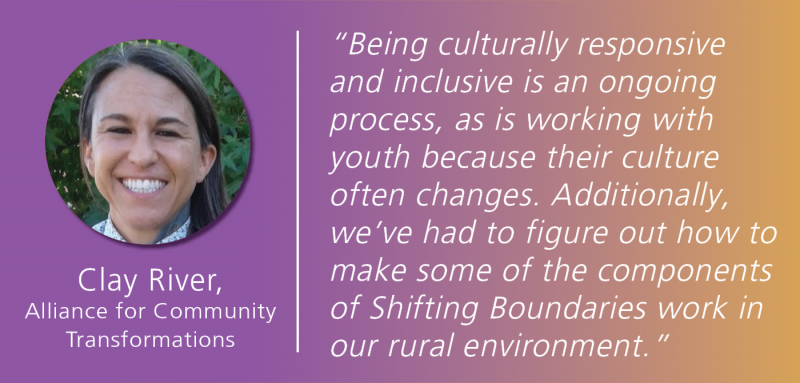Creating Safer Communities Across Rural Mariposa County

Author’s Information
- Clay River, Prevention Specialist
- Alliance for Community Transformations, Rural Mariposa County
- Clay@alliance4you.org
Our community, like many others, has challenges in recognizing and responding to abuse. Our prevention work is aimed at educating the community about ways to prevent and address violence in the many forms it takes.
We believe that through partnerships and community engagement, we can work together to end violence and create a safe, peaceful Mariposa County. Through many years of getting to know our community and building upon shared values, we have cultivated opportunities to work together towards collective goals.
After years of relationship building, we found alignment with school districts to pursue a prevention plan together. Schools are particularly protective environments where youth can learn healthy peer-to-peer relationship skills and help create positive atmospheres.
When we originally explored this approach, we did not expect to be using an established program. We learned early on in our planning process that an evidence-based program was required for our funding. Our initial reaction was disappointment, because we wanted to be able to design a program that was specific to our rural community. Our staff, in partnership with leaders in our education system, had conversations about how to make a pre-designed program work for our community, and felt that we could still make it work. We decided upon the Shifting Boundaries program, which supports students and staff in making learning environments safer by integrating the use of school wide interventions, interactive activities, and classroom lessons.
We started Shifting Boundaries in all seven Mariposa County sites with middle school level students. Over time, we learned what works well and what doesn’t. To meet the needs of the community, we’ve had to make adaptations to our approach. Being culturally responsive and inclusive is an ongoing process, as is working with youth because their culture often changes. Additionally, we’ve had to figure out how to make some of the components of Shifting Boundaries work in our rural environment. We will continue to make changes over the years as we learn more.
To this day, we’re working to overcome many challenges, such as communicating the importance of our work amid many competing priorities, and trying to shift cultural attitudes about violence, such as the idea that it is not preventable. In spite of these issues, we are fortunate to have relationships within our school system who believe in our work—and funding for several more years to sustain this program over time. If we had more staffing and funding, we would probably make a bigger impact over time.
We are still learning about what works to engage young people in violence prevention, and the best ways to educate our community. We do know that we need many partnerships and the support of nearly everyone in order to be successful; but we’re measuring changes over time, and we know that Shifting Boundaries is making an impact.

